How to plant and grow daffodils outdoors: everything a gardener needs to consider
Primroses adorn the garden just after the snow melts, heralding warm spring days. Among the most unpretentious flowers are snowdrops, muscari, woods, tulips and, of course, handsome daffodils. These bulbous plants are undemanding to care for, but there are a few things to consider in order to get the most lush flowering within a few years.
Characteristic
In nature, there are 60 species of daffodils and more than one thousand varieties and hybrids. The main color of the buds is white and yellow, but the work of breeders has allowed to bring out many shades and combinations.
The height of the stem of some varieties reaches 45-50 cm. Daffodils look good both in the garden and in a pot on the windowsill, flowers are often used in bouquets. In addition to beauty, the buds give a delicate pleasant smell.
Varieties differ not only in color, number and shape of flowers, but also in terms of budding. Landscape designers use early flowering and late flowering varieties of daffodils in the same flower bed so that some bloom after others, and the flower bed is constantly picturesque.
When and where to plant daffodils
Daffodils are resistant to cold weather, so they are planted in a flower garden either in spring or autumn:
- Spring planting is carried out immediately after the snow melts. In order for them to bloom in the first year, the bulbs must be awakened by placing them in the cold (no higher than + 8 ° C) two months before planting. In cold regions, already established daffodils bloom in April, in warmer climates they are a traditional flower by March 8.
- In autumn, the bulbs are buried in the ground no later than September so that they have time to take root before frost. In this case, you need to fertilize the site in advance. A year before planting, the soil begins to be prepared by liming. And in the summer, about a month before the settlement of the bulbs, a nutrient mixture of peat, humus and sand is introduced into the soil.
Requirements for the location of the flower bed with daffodils
It is recommended that the area for growing daffodils is well lit. Flowers grow well in partial shade, but in the sun they give a more lush harvest of buds. At the same time, daffodils should not be exposed to direct scorching rays - it is necessary to organize the conditions of diffused light.
Another important condition is the absence of drafts: cold wind currents will destroy the seedlings of primroses. Finally, the soil should be well-drained and neutral in acidity. Daffodils grow well on loam and sandy loam soils.
Table. Ground correction, at 1 m2
| Soil type | Measures |
| Alkaline | 200 g dolomite flour |
| Sour | 1 tbsp. wood flour |
| Heavy clay | peat and sand |
| Sandy | black soil and fertilizers |
Water should not stagnate at the roots. It is necessary to check the depth of the groundwater so that it does not erode the root system. Excess moisture leads to fungal infections.
To eliminate the risk of diseases, a place is chosen for planting where other bulbs (lilies, tulips, etc.) have not grown before. In extreme cases, you need to withstand a year after digging out the old bulbs.
Advice
Daffodils grow well after cereals, legumes and nightshades.
How to plant: all stages
Before planting daffodils, it is worth considering the bulbs and selecting healthy ones, as this directly affects flowering. Suitable for rooting are bulbs with a diameter of 5 cm, dense to the touch, without cracks or spots.If the planting material is purchased in a specialized store, it is better to wait until autumn, since the highest quality samples are obtained at this time of the year.
Before planting, all the bulbs are placed in a perlite bag or sand box and left in a cool place for 10 days. Before the planting itself, a disinfecting procedure is carried out with a weak solution of potassium permanganate.
Open ground planting rules:
- The depth of the hole is about 17 cm. If the soil in the area is heavy, then the bulbs are immersed to a shallower depth - about 12 cm. The size of the bulb itself also affects the planting depth. The easiest way to determine the planting depth is by measuring the diameter of the bulb and multiplying it by 3. Bulbs planted at the optimum depth will not overheat in summer and freeze in winter.
- The distance between plants is 15-20 cm and it, like the depth, depends on the size of the planting material. The recommended distance between large bulbs is up to 20 cm, between small, daughter bulbs - no more than 10 cm. When marking the intervals, remember that daffodils grow well and fill the flower bed with a solid carpet.
- A layer of sand is poured onto the bottom of the landing hole.
- The bulb is placed in a hole, covered with soil and watered immediately.
- If planting is carried out in the fall, the soil is mulched with peat and leaves of fruit crops. In early spring, the mulch layer is immediately removed so that there are no obstacles to growth.
Daffodil care
Daffodils are unpretentious plants, but without careful attention, their flowering will be inexpressive. How to provide competent care for primroses:
- Daffodils are sensitive to lack of moisture. With the appearance of sprouts, watering is carried out twice a week.
- The soil on the site is weeded from weeds and loosened after each watering, especially during the period of active growth of daffodils.
- After the flowers appear, the plant redistributes its forces for seed formation. For this reason, gardeners recommend pruning withering buds to extend the flowering period.
- They do the opposite with leaves: they are left until the end of the season, until they dry out. This helps the plant to bloom the next year.
- Fertilization promotes more vigorous growth and general strengthening of daffodils. The first feeding is carried out in early spring with a complex fertilizer containing calcium, phosphorus and sodium. If at this time you overfeed the daffodils with nitrogen, then the green mass will grow. The second feeding is carried out after the appearance of peduncles: preparations with nitrogen and potassium are introduced. The last dressing is done when all the buds have blossomed, use a complex fertilizer for flowering plants.
- Liquid fertilizer is applied in dry season, powder - in rainy weather. It is best to dispense preparations after weeding.
- At the end of flowering and drying of the leaves, all aerial parts are cut off, and the bulbs are left in the ground. The flower garden is regularly, but not often weeded, loosened and watered until autumn, then the soil is mulched with peat and straw so that the bulbs do not die in winter from the cold.
Transplant and reproduction
For 5 years, daffodils grow well and bloom in the country. But then more scarce flower formation is noted - it is time to transplant the bulbs.
At the end of the season, daffodils are dug up, washed and dried, and then sent to storage in a cool place. The next spring, the material is planted according to standard rules, but already in a new place.
After the bulb is removed from the soil, it can be divided into mother and daughter. This is a vegetative breeding method for daffodils. These bulbs are planted immediately after separation.
Pests, diseases and other growing problems
The main problems of growing daffodils:
- rot;
- fusarium;
- slugs;
- nematodes;
- onion and root mites;
- narcissus fly.
Preventive measures:
- Before the first buds begin to appear, spray with insecticide and acaricide.
- After flowering, treat the plant with a solution of copper sulfate (100 g per 10 L of water, 2 L per 10 m2).
- Before planting, be sure to disinfect the bulbs with potassium permanganate.
Why the daffodil doesn't bloom, for several reasons:
- landing too close;
- increased acidity of the soil;
- excess or lack of moisture;
- lack of sun.
Daffodils in landscape design
How to place and with what to combine primroses on the site:
- Long flower beds (flower borders) from one type of daffodils look harmoniously.
- Good neighbors in a single-tier flower bed will be goose, hyacinth, tulip, crocus, lungwort, primrose.
- Daffodils are planted as a framing of a reservoir on the site.
- An elegant ensemble is formed by daffodils and muscari.
- Dense thickets of geraniums and hosts will make the area with daffodils neat (when the buds have faded, but the leaves remain).
- Daffodils successfully fit into compositions with wild flowers: chamomiles, poppies and other meadow plants.
Sunny daffodils are one of the first to delight the grower with bright buds. In order for flowering to come on time, you must not forget about unpretentious beauties and pay attention to them: water on time, loosen the soil, apply fertilizers and plant every few years.
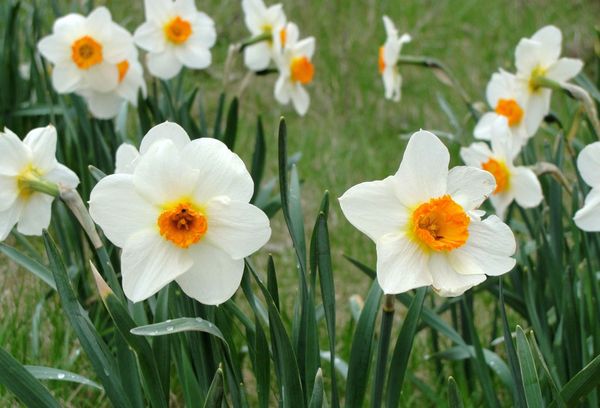
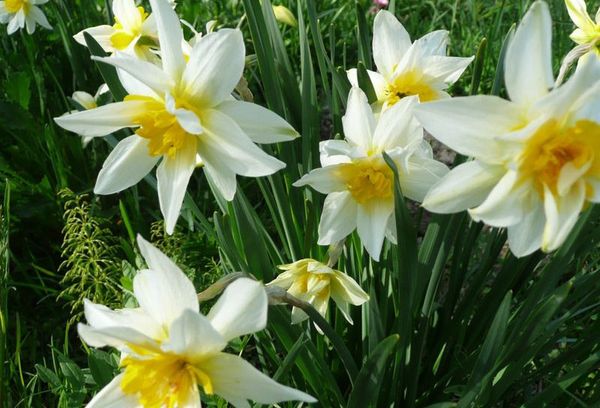
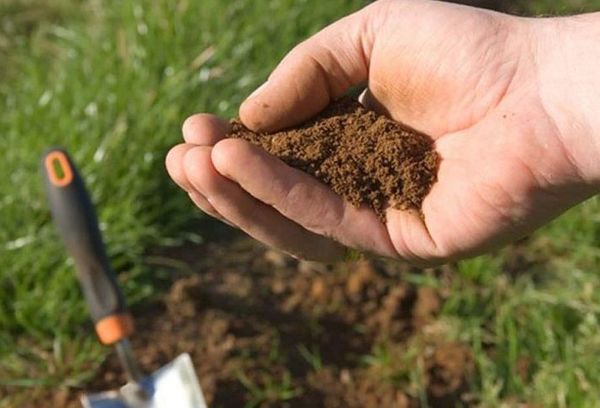
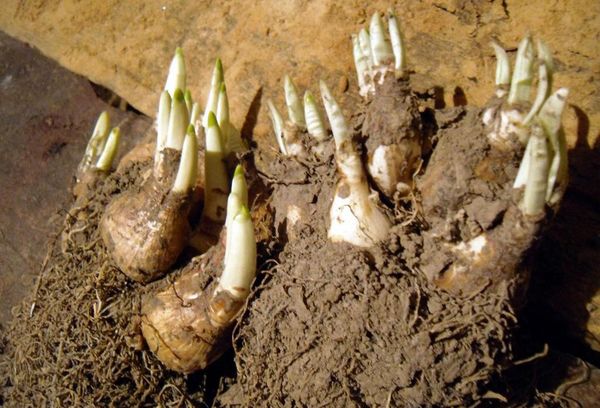
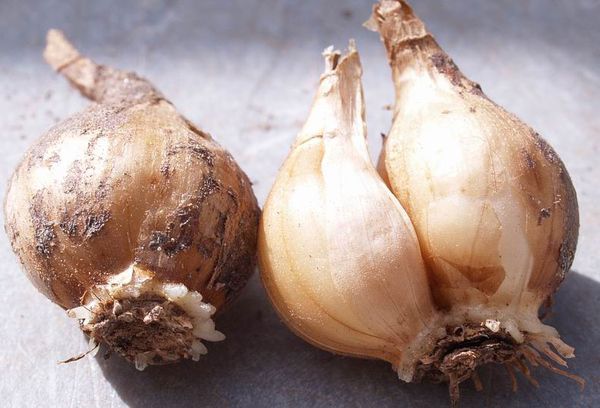
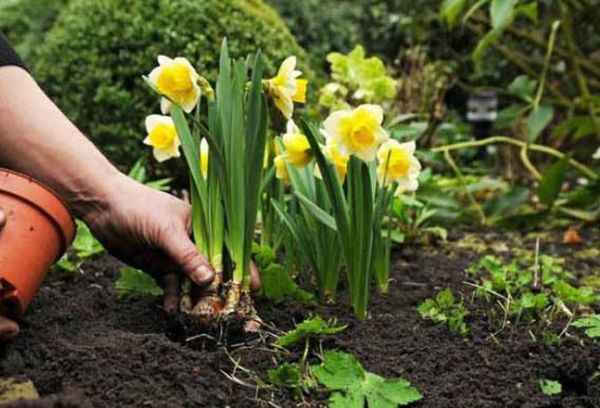
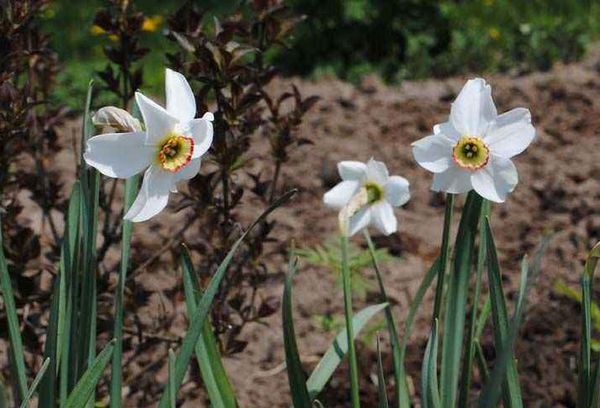
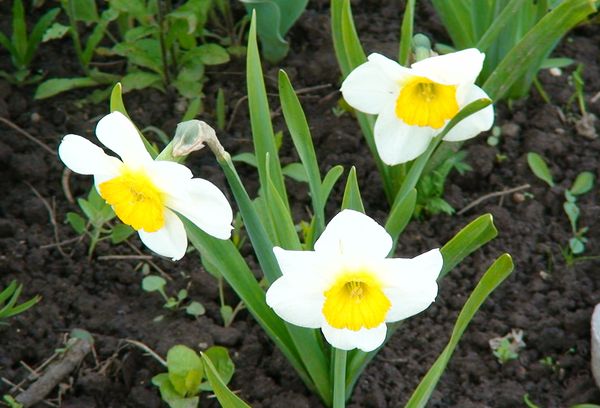
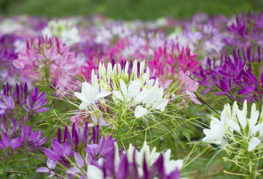
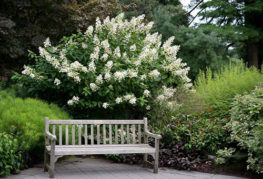

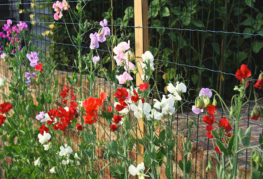
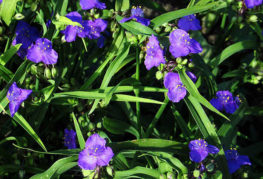
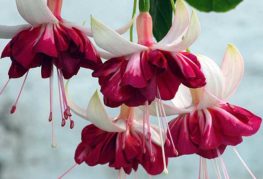
and will be published shortly.